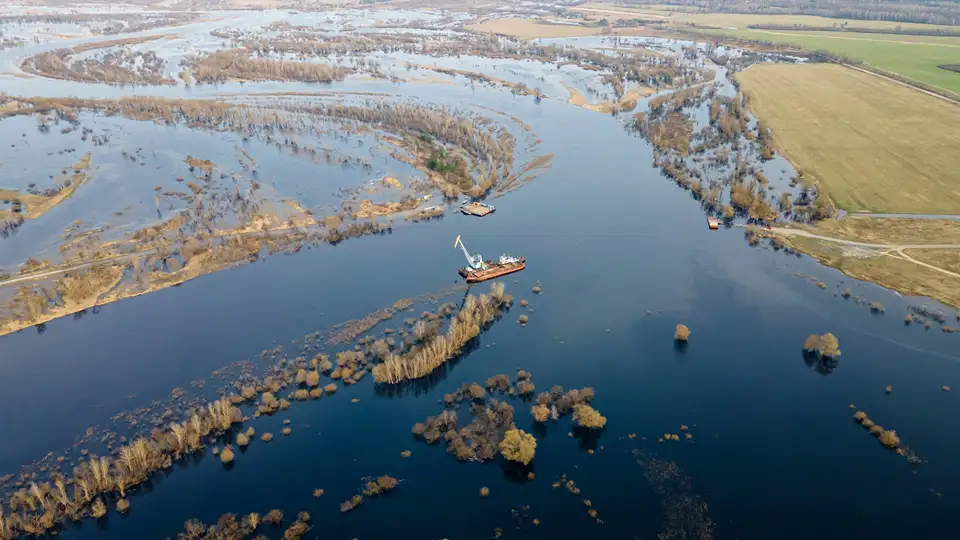Introduction
The Toi Moana Bay of Plenty Regional Council is taking proactive steps to strengthen the region’s defences against the growing impacts of climate change. Through a significant new round of government funding, the Council has secured financial support for essential flood protection projects aimed at safeguarding communities, infrastructure, and local economies.
This strategic investment highlights how regional authorities can build climate resilience by anticipating environmental risks rather than reacting to disasters after they occur. By focusing on long-term sustainability, the Bay of Plenty is positioning itself as a leader in forward-thinking flood mitigation and climate adaptation.
The Before the Deluge Program
At the heart of these efforts lies the Before the Deluge program, a collaborative initiative between New Zealand’s regional and unitary councils and the Central Government. The program’s goal is to co-fund regional infrastructure improvements that enhance community safety, productivity, and long-term resilience.
The funding secured by the Bay of Plenty Regional Council represents a vital part of this national initiative. By partnering with the Central Government, the Council can implement flood protection projects that ensure both immediate and future preparedness against the increasing frequency and severity of extreme weather events.
These joint efforts demonstrate how regional and national collaboration can effectively strengthen climate resilience while delivering economic and social benefits to local communities.
Strengthening Flood Protection Infrastructure
Flood protection infrastructure remains the first and most critical line of defence against storms, floods, and unpredictable weather patterns. As climate change continues to influence rainfall intensity and coastal dynamics, upgrading and maintaining these defences has never been more essential.
According to Bay of Plenty Regional Council Chief Executive Fiona McTavish, “Investing upfront in resilience is far more cost-effective than responding to the impacts after the fact.” This philosophy underscores the importance of the region’s ongoing flood protection projects, which aim to protect lives, livelihoods, and key assets across multiple catchments.
By reinforcing stopbanks, improving canals, and managing erosion risks, the Council is ensuring that communities remain safe while also fostering climate resilience through smart infrastructure planning.
Key Funded Projects Across the Region
The new round of co-investment funding will support several high-priority flood protection projects across the Bay of Plenty, each designed to address specific regional challenges while contributing to the broader goal of climate adaptation.
Rangitāiki-Tarawera Rivers Scheme
With a total project cost of $5.2 million, including $3.12 million in co-investment, this scheme involves major upgrades to stopbanks and canals along Kōkōhinau, the Tarawera River, and Rangitāiki River and Canals. These works will improve the system’s ability to manage heavy flows and prevent overflow during extreme rainfall.
Whakatāne-Tauranga Rivers Scheme
This project, totaling $4.4 million with $2.64 million in co-investment, focuses on critical upgrades to the Whakatāne Canals, Trident stopbank, and the Awatapu area. Enhancements here will improve flood conveyance capacity, reducing flood risks in residential and industrial zones while advancing climate resilience across Whakatāne.
Kaituna Catchment Control Scheme
Valued at $3.3 million with $1.98 million in government support, this project emphasizes erosion control along the Ohineangaanga Stream. These improvements are key to maintaining sediment stability and preventing riverbank collapse—vital components in long-term flood protection projects.
Ōpōtiki Township Flood Protection Infrastructure
The $2.3 million project (including $1.38 million in co-investment) focuses on strengthening stopbanks near Duke Street West and along State Highway 2. Delivered by the Ōpōtiki District Council, these upgrades will safeguard residential areas and transport corridors while contributing to regional climate resilience.
Together, these projects represent a comprehensive approach to flood risk management, integrating engineering expertise with forward-looking environmental planning.
Building a Climate-Ready Future
The Bay of Plenty Regional Council’s strategy highlights an important shift in how local governments are approaching environmental challenges by investing in flood protection projects that not only respond to present risks but also prepare for future climate realities.
This approach reflects a deep understanding of climate resilience: that communities must adapt to changing conditions through sustainable design, resilient infrastructure, and proactive collaboration. Every dollar invested in prevention and protection today saves far more in recovery costs tomorrow.
By enhancing stopbanks, stabilizing river systems, and mitigating erosion, the region is developing infrastructure capable of withstanding the pressures of a warming world. These initiatives also strengthen community confidence, ensuring that residents and businesses can thrive even as environmental challenges intensify.
Conclusion
The Bay of Plenty Regional Council’s commitment to flood protection projects is a clear example of leadership in action. By leveraging Central Government partnerships through the Before the Deluge program, the Council is not only protecting its communities but also setting a benchmark for proactive climate resilience across New Zealand.
These efforts go beyond short-term infrastructure upgrades; they represent a long-term vision for a safer, more adaptable region. As weather extremes become the new normal, the Bay of Plenty’s focus on resilience and foresight offers a model for how communities everywhere can prepare for the challenges of climate change.
